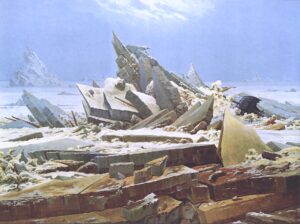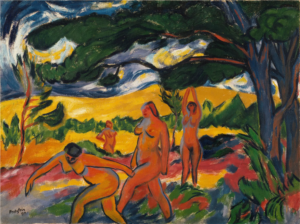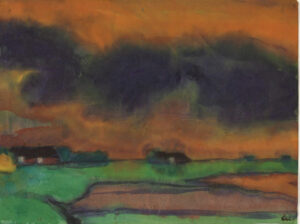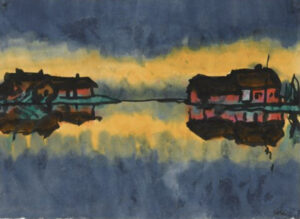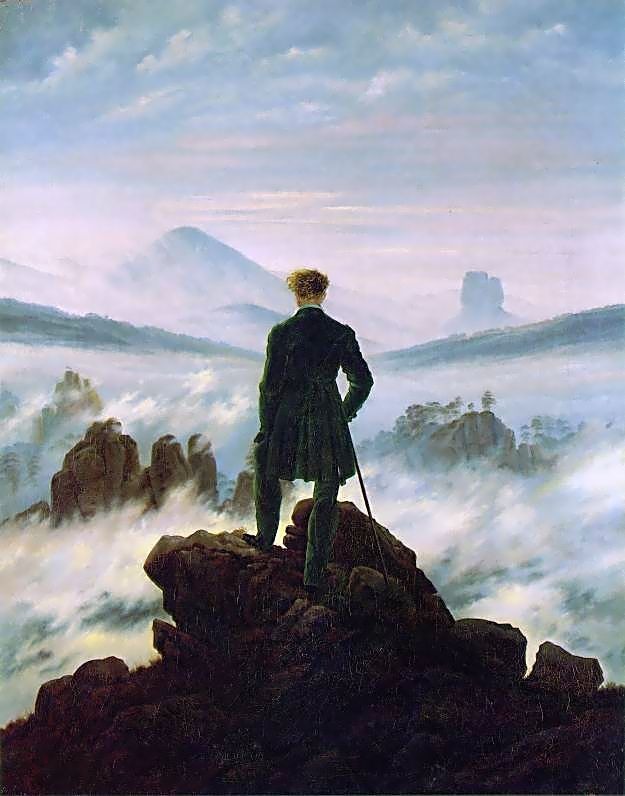
Caspar David Friedrich, a German painter, produced the work “Wanderer above the Sea of Fog” in 1818. The Romantic period, which lasted from the late 18th to the middle of the 19th century, is known for having some of the most recognizable works ever created. In the painting, a single person is shown gazing out over a huge expanse of mountains and valleys shrouded in fog while standing on a rocky protrusion. The man’s face can’t be seen because of the black robe covering his body and walking stick in his hand. The painting has a feeling of mystery and grandeur because to the towering mountains and the churning fog that dominate the scene.
The painting has a strong connection to German landscapes and portrays the country’s cultural and historical setting during the Romantic era. The painting was produced in 1818, a year of profound social and political change in Germany. Germany was going through its Industrial Revolution at the time, which contributed to a rising sense of isolation and estrangement from nature. In response to this trend, the Romantic movement was born, emphasizing the value of personal experience, emotion, and the natural world. The painting, which in numerous aspects reflects Germany’s cultural and historical setting, embodies this Romantic ideal of man’s interaction with nature. The scenery depicted in the painting is hilly, which is a typical aspect of the German countryside. Mountains frequently appear in Friedrich’s painting as symbols of both the majesty and the mystique of the natural world. A figure standing on a rocky protrusion in the painting might be interpreted as a metaphor for the person’s interaction with nature. Because of his black coat, the person stands out and draws attention to the contrast between the natural environment and human presence. The painting’s use of light and shadow illustrates the Romantic movement’s emphasis on personal experience and emotion. A gentle, golden light that conveys concentration and reflection surrounds the person. The fog that envelops the mountains underlines the concept that nature is a strong force that is beyond human comprehension and contributes to the painting’s feeling of mystery and majesty.
According to the painting, we can learn “Wanderer above the Sea of Fog” provides a distinctive viewpoint on the surroundings in addition to just representing it. The painting’s subject, who is standing on a rocky protrusion and is gazing out over a huge expanse of mountains and valleys, invites the viewer to put oneself in that similar situation. This viewpoint conveys awe and majesty that is hard to convey in other ways. The painting has a sense of mystery and wonder that is enhanced by the use of light and shadow, and the swirling fog also contributes to this feeling. The painting illustrates the focus on personal experience and emotion that the Romantic movement placed. The painting enables the observer to interact with the scene on a personal level, to take in its majesty and beauty, and to be awed and inspired. It is not possible to develop an emotional connection to the environment just via scientific research or observation. It is crucial to remember that art has the power to elicit feelings and meaning in a manner that is often difficult to achieve via other methods. The painting “Wanderer above the Sea of Fog” provides an experience that is distinct from merely looking at a scene. With this painting, Friedrich captures the essence of the landscape by evoking feelings and ideas as well as its physical qualities.
Source:
https://www.artble.com/artists/caspar_david_friedrich/paintings/wanderer_above_the_sea_of_fog

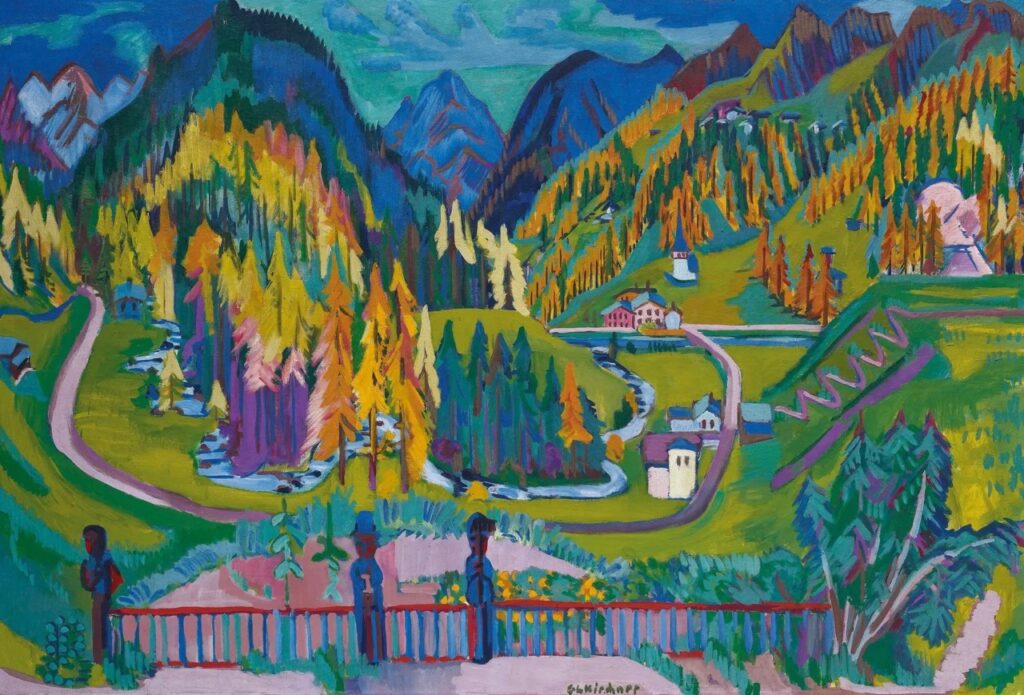 “Sertig Valley in Autumn” was painted by Ernst Ludwig Kirchner in 1925. Kirchner was a founder of the Die Brücke style of German Expressionism, which emerged in the early 20th century in Dresden as a rejection of traditional artistic styles. “Brücke” translates to bridge, and these artists saw themselves as a sort of bridge between the artistic world and the bourgeois. The group became defined by bright colors and intense emotion in scenes sometimes communicating radical political views. A manifesto from Die Brücke written in 1906 states that their goal was to “achieve freedom of life and action against the well-established older forces” (
“Sertig Valley in Autumn” was painted by Ernst Ludwig Kirchner in 1925. Kirchner was a founder of the Die Brücke style of German Expressionism, which emerged in the early 20th century in Dresden as a rejection of traditional artistic styles. “Brücke” translates to bridge, and these artists saw themselves as a sort of bridge between the artistic world and the bourgeois. The group became defined by bright colors and intense emotion in scenes sometimes communicating radical political views. A manifesto from Die Brücke written in 1906 states that their goal was to “achieve freedom of life and action against the well-established older forces” (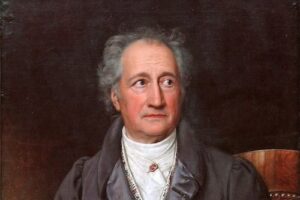
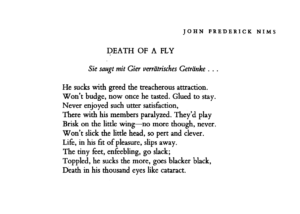
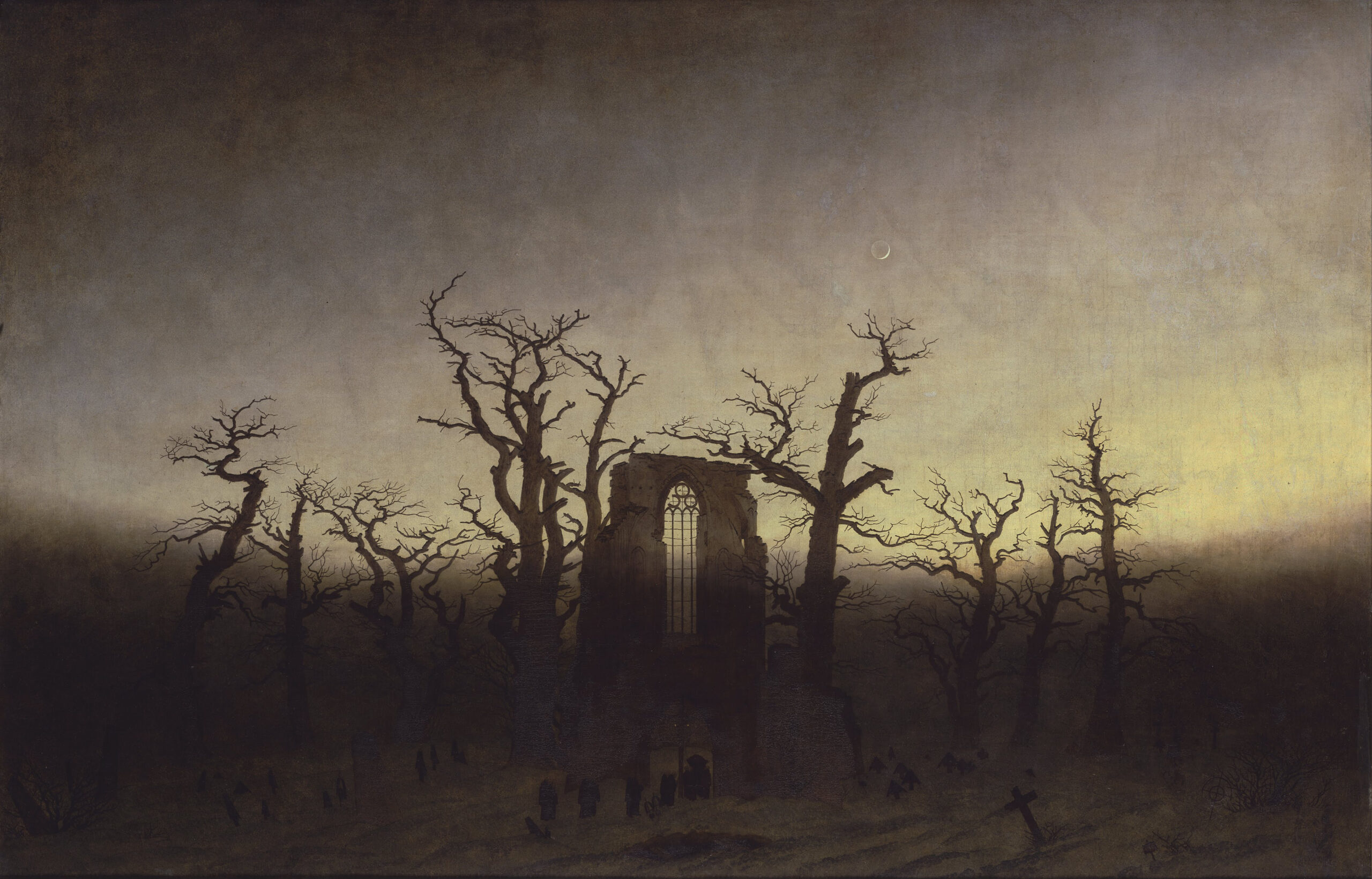 Abtei im Eichwald, known in English as The Abbey in the Oakwood, is one of many of Caspar David Friedrich’s depictions of the ruins of Eldena Abbey. This particular iteration stands out because of the dark, Gothic tone of the piece. The funeral, graveyard, scraggly trees, waning light, and sliver of a moon all combine in this painting to send a message about the relationship between nature and humanity. Painted between 1809 and 1810, it is solidly a part of the Romantic Period.
Abtei im Eichwald, known in English as The Abbey in the Oakwood, is one of many of Caspar David Friedrich’s depictions of the ruins of Eldena Abbey. This particular iteration stands out because of the dark, Gothic tone of the piece. The funeral, graveyard, scraggly trees, waning light, and sliver of a moon all combine in this painting to send a message about the relationship between nature and humanity. Painted between 1809 and 1810, it is solidly a part of the Romantic Period.